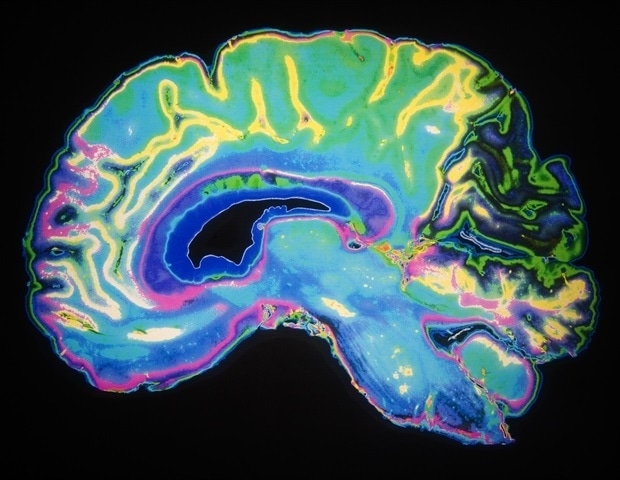
1 2 Pune: If we do not understand the core fundamentals of what success means, then achieving Viksit Bharat by 2047 will be a long shot, said Anand Ranganathan , scientist and author. Ranganathan addressed a gathering at the VK Rajwade auditorium at Bharat Itihas Sanshodhak Mandal (BISM) on Sunday. The auditorium opened its doors after a four-year-long restoration project, which was done in collaboration with the Maaydesh Foundation .
Over 150 people attended the inauguration event. Ranganathan, who gave the keynote address at the inauguration event, spoke on the subject of the success the country has accomplished, stating that the country has top-notch infrastructure and has improved in life expectancy, asset management, and so much more. "Our hunger index, however, is at 111, while our GDP rank in the world is 136.

Clearly, we have success, but it is a game of two halves. We have to realise what led to the failures as well. If we do not understand it, we will be at an inflection point again," he said.
Ranganathan emphasised the need for research organisations such as BISM to ensure the country does not forget its past. "We, as Indians, look towards our past as well as our future as we advance towards greatness. Somewhere along the way towards advancement, we have forgotten our past.
Such structures are important so that we do not forget what made us great once," he said. Bharat Itihas Sanshodhak Mandal is over 100 years old. It was established by historians VK Rajwade and Khanderao Mehendale on July 7, 1910, in Sadashiv Peth.
The Mandal contains multiple copper artefacts and weapons from the period of Maratha rule, 25 lakh rare documents in Modi, Parsi, Kannada and Sanskrit scripts, 45,000 books on Maratha history, 32,000 manuscripts, all rare letters of Shahaji, Chhatrapati Sambhaji Maharaj and Chhatrapati Shivaji Maharaj, and original paintings of rulers such as Chhatrapati Shivaji Maharaj and Mughal Emperor Akbar. The Mandal is also a hub for historians and researchers to conduct studies and publish their papers on history. The building, which was dilapidated in 2020, was undertaken for renovation after a Memorandum of Understanding was signed between the foundation and the Mandal.
The newly renovated structure has four large halls for researchers with an interactive blackboard, a 100-seat auditorium, a museum displaying originals and replications of paintings and artefacts, and a library with all books for reference. It will now be open from 11am to 8pm for research scholars to conduct their studies with experts. The museum will be open to the general public requesting access.
For the process, documents over a hundred years old and countless reports were searched for, and permissions were acquired from the archaeological department. "The inspiration of renowned researchers and founder historians VK Rajwade and Sardar Khanderao Mehendale, as well as GH Khare, SN Joshi and Padma Vibhushan Babasaheb Purandare, can be felt here. The Maaydesh Foundation and I feel a sense of duty fulfilled.
It brings us joy to have contributed in some small measure to this legacy. I believe that the future of history is preserved through these structures. This building stands proudly behind the researchers who showcase Maharashtra's historical heritage to the world," said Arun Joshi, founder of Maaydesh Foundation, which helped in the restoration project.
The alcoves in the cupboards of the Rajwade Hall's walls have been transformed to display information about the organisation's various activities. Painted illustrations depicting different departments, such as the armoury, manuscripts, coins, seals, valuables and original letters, have been displayed. Photographs of 50 researchers from the last hundred years have been exhibited in the hall.
Inspired by the old oil paintings and sketches from the organisation's collection, the building's interior has been decorated, and the exterior surroundings beautified. The Mandal is now digitising the scripts so that researchers and scholars can access them from any part of the world. The data, which dates back at least 700 years to the era of Chhatrapati Shivaji Maharaj, the Marathas, Peshwas, and Shahu Maharaj, was painstakingly compiled and preserved over the years from all over the nation.
Pune: If we do not understand the core fundamentals of what success means, then achieving Viksit Bharat by 2047 will be a long shot, said Anand Ranganathan , scientist and author. Ranganathan addressed a gathering at the VK Rajwade auditorium at Bharat Itihas Sanshodhak Mandal (BISM) on Sunday. The auditorium opened its doors after a four-year-long restoration project, which was done in collaboration with the Maaydesh Foundation.
Over 150 people attended the inauguration event. Ranganathan, who gave the keynote address at the inauguration event, spoke on the subject of the success the country has accomplished, stating that the country has top-notch infrastructure and has improved in life expectancy, asset management, and so much more. "Our hunger index, however, is at 111, while our GDP rank in the world is 136.
Clearly, we have success, but it is a game of two halves. We have to realise what led to the failures as well. If we do not understand it, we will be at an inflection point again," he said.
Ranganathan emphasised the need for research organisations such as BISM to ensure the country does not forget its past. "We, as Indians, look towards our past as well as our future as we advance towards greatness. Somewhere along the way towards advancement, we have forgotten our past.
Such structures are important so that we do not forget what made us great once," he said. Bharat Itihas Sanshodhak Mandal is over 100 years old. It was established by historians VK Rajwade and Khanderao Mehendale on July 7, 1910, in Sadashiv Peth.
The Mandal contains multiple copper artefacts and weapons from the period of Maratha rule, 25 lakh rare documents in Modi, Parsi, Kannada and Sanskrit scripts, 45,000 books on Maratha history, 32,000 manuscripts, all rare letters of Shahaji, Chhatrapati Sambhaji Maharaj and Chhatrapati Shivaji Maharaj, and original paintings of rulers such as Chhatrapati Shivaji Maharaj and Mughal Emperor Akbar. The Mandal is also a hub for historians and researchers to conduct studies and publish their papers on history. The building, which was dilapidated in 2020, was undertaken for renovation after a Memorandum of Understanding was signed between the foundation and the Mandal.
The newly renovated structure has four large halls for researchers with an interactive blackboard, a 100-seat auditorium, a museum displaying originals and replications of paintings and artefacts, and a library with all books for reference. It will now be open from 11am to 8pm for research scholars to conduct their studies with experts. The museum will be open to the general public requesting access.
For the process, documents over a hundred years old and countless reports were searched for, and permissions were acquired from the archaeological department. "The inspiration of renowned researchers and founder historians VK Rajwade and Sardar Khanderao Mehendale, as well as GH Khare, SN Joshi and Padma Vibhushan Babasaheb Purandare, can be felt here. The Maaydesh Foundation and I feel a sense of duty fulfilled.
It brings us joy to have contributed in some small measure to this legacy. I believe that the future of history is preserved through these structures. This building stands proudly behind the researchers who showcase Maharashtra's historical heritage to the world," said Arun Joshi, founder of Maaydesh Foundation, which helped in the restoration project.
The alcoves in the cupboards of the Rajwade Hall's walls have been transformed to display information about the organisation's various activities. Painted illustrations depicting different departments, such as the armoury, manuscripts, coins, seals, valuables and original letters, have been displayed. Photographs of 50 researchers from the last hundred years have been exhibited in the hall.
Inspired by the old oil paintings and sketches from the organisation's collection, the building's interior has been decorated, and the exterior surroundings beautified. The Mandal is now digitising the scripts so that researchers and scholars can access them from any part of the world. The data, which dates back at least 700 years to the era of Chhatrapati Shivaji Maharaj, the Marathas, Peshwas, and Shahu Maharaj, was painstakingly compiled and preserved over the years from all over the nation.
Get the latest lifestyle updates on Times of India, along with EID Wishes , Messages and quotes !.















